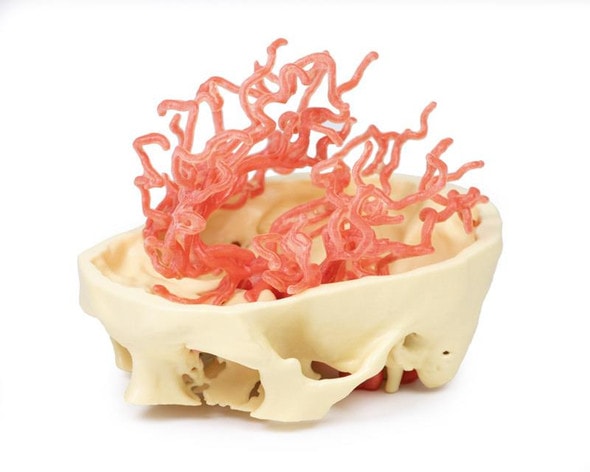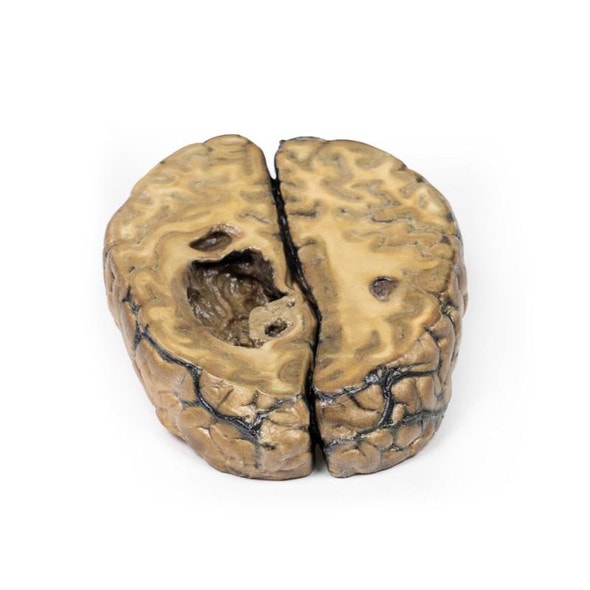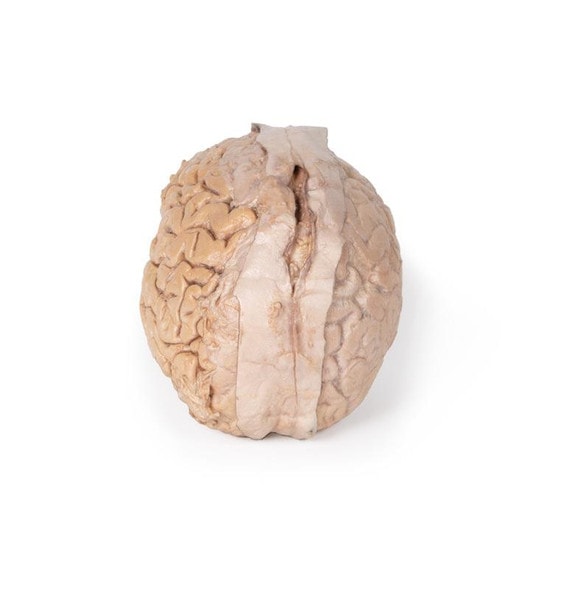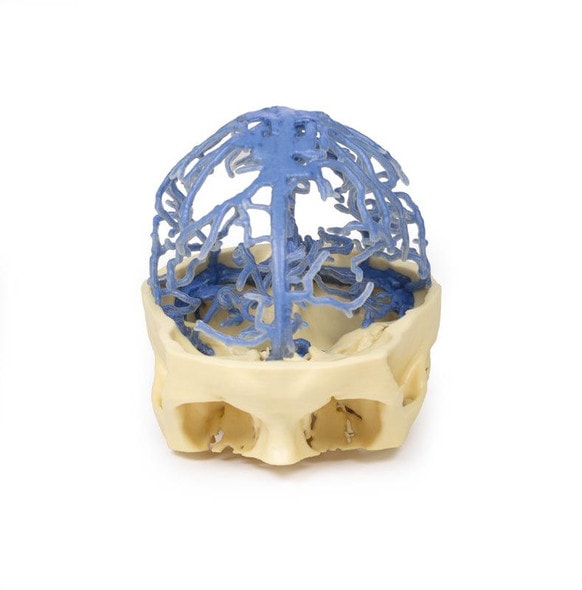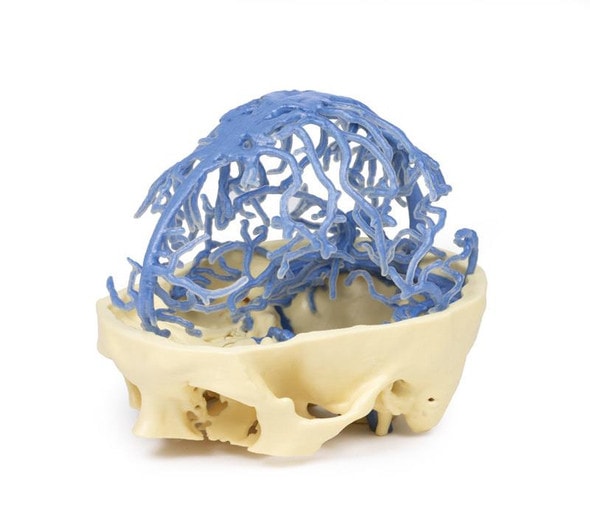Description
This 3D model is a midsagittal hemisection through a whole brain, preserving the right side anatomy and deep brain structures and spaces visible in the midline. In lateral view, the right cerebral and cerebellar hemispheres are covered in the arachnoid mater. In the midline view, the brain regions from the cerebrum to the medulla oblongata are preserved. Centrally, the third ventricle is opened, with an intact septum pellucidum superiorly positioned and obscuring the lateral ventricles within the cerebral hemisphere. On the inferior margin of the third ventricle both the right mamillary body and right optic tract can be observed, whereas posteriorly the cerebral aqueduct can be observed extending across the midbrain between the tectum and tegmentum towards the fourth ventricle (between the cerebellum and pons). The cerebellum is separated from the occipital lobe by a preserved portion of the tentorium cerebelli, and in cross-section the cerebellar cortex helps form the prominent arbor vitae.
A series of arterial branches have been false colored to contrast their course across the preserved brain structures. In the midsagittal view the anterior cerebral artery courses from around the corpus callosum to supply the cingulate gyrus and other midline cortical regions. The base of the middle cerebral artery can be seen passing deep between the temporal and frontal lobes, with the posterior communicating artery connecting it to a small remnant of the posterior cerebral artery. Adjacent to the posterior cerebral is the superior cerebellar artery, extending laterally to pass between the temporal lobe and the cerebellum before passing deep into the transverse fissure.
Advantages of 3D Printed Anatomical Models
- 3D printed anatomical models are the most anatomically accurate examples of human anatomy because they are based on real human specimens.
- Avoid the ethical complications and complex handling, storage, and documentation requirements with 3D printed models when compared to human cadaveric specimens.
- 3D printed anatomy models are far less expensive than real human cadaveric specimens.
- Reproducibility and consistency allow for standardization of education and faster availability of models when you need them.
- Customization options are available for specific applications or educational needs. Enlargement, highlighting of specific anatomical structures, cutaway views, and more are just some of the customizations available.
Disadvantages of Human Cadavers
- Access to cadavers can be problematic and ethical complications are hard to avoid. Many countries cannot access cadavers for cultural and religious reasons.
- Human cadavers are costly to procure and require expensive storage facilities and dedicated staff to maintain them. Maintenance of the facility alone is costly.
- The cost to develop a cadaver lab or plastination technique is extremely high. Those funds could purchase hundreds of easy to handle, realistic 3D printed anatomical replicas.
- Wet specimens cannot be used in uncertified labs. Certification is expensive and time-consuming.
- Exposure to preservation fluids and chemicals is known to cause long-term health problems for lab workers and students. 3D printed anatomical replicas are safe to handle without any special equipment.
- Lack of reuse and reproducibility. If a dissection mistake is made, a new specimen has to be used and students have to start all over again.
Disadvantages of Plastinated Specimens
- Like real human cadaveric specimens, plastinated models are extremely expensive.
- Plastinated specimens still require real human samples and pose the same ethical issues as real human cadavers.
- The plastination process is extensive and takes months or longer to complete. 3D printed human anatomical models are available in a fraction of the time.
- Plastinated models, like human cadavers, are one of a kind and can only showcase one presentation of human anatomy.
Advanced 3D Printing Techniques for Superior Results
- Vibrant color offering with 10 million colors
- UV-curable inkjet printing
- High quality 3D printing that can create products that are delicate, extremely precise, and incredibly realistic
- To improve durability of fragile, thin, and delicate arteries, veins or vessels, a clear support material is printed in key areas. This makes the models robust so they can be handled by students easily.














